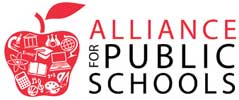How we teach reading has become the latest debate in education. On one side are the proponents of the “science of reading” movement, a phonics- and cognitive-based instructional method. The opposing side champions “balanced literacy,” emphasizing word recognition and context clues. But what exactly is the science of reading, and can it enhance teaching practices to help children become proficient readers?
What Is the Science of Reading?
The science of reading represents a collection of research and evidence from various disciplines, including education, linguistics, cognitive psychology, special education, and neuroscience. It examines the essential cognitive processes involved in competent reading and describes how reading skills develop in both typical and atypical readers.
The science of reading is NOT a specific program or a specific teaching strategy. It is not a product that can be purchased, nor is it simply phonics-based instruction. Critics of the science of reading tout ‘balanced literacy’– read more on that approach in a recent article in The Week.
Evidence-Based Guidance for Teaching
The science of reading philosophy on what matters in early literacy instruction include:
- Phonological Awareness: Teach students to recognize and manipulate sounds within words. Start with syllables and progress to individual phonemes. Explicitly connect phonemes to letters for effective word decoding.
- Phonics and Word Recognition: Explicitly and systematically teach letter sounds and sound-spelling patterns. Practices that involve reading and writing words in isolation and within context are most effective.
- Fluency: Provide frequent opportunities for oral reading from connected text (sentences, paragraphs, passages). Focus on both automatic word recognition and expressive fluency while keeping comprehension central.
- Vocabulary and Oral Language Comprehension: Engage students in high-quality, language-rich interactions. Explore academic and inferential language during read-alouds. “Build recognition of shared morphemes (e.g., root words, affixes) across oral and written language.”
- Text Comprehension: Even before students read independently, expose them to rich texts through read-alouds and scaffolded reading experiences.
The science of reading isn’t a single approach; it’s a robust body of evidence drawn from diverse fields. It informs curriculum design, pedagogy, and instructional practices. Its proponents feel that by embracing evidence-based strategies, educators can empower students to become confident and proficient readers.
The study of reading is evolving as new evidence emerges. Research institutions like the Florida Center for Reading Research https://fcrr.org/ at Florida State University continue to study the field and provide educators and families with resources like their series “Supporting your child’s reading at home”.
See these stories for additional stories on the science of reading and balanced literacy:
- https://theweek.com/education/science-of-reading-battle
- https://www.theatlantic.com/magazine/archive/1997/11/the-reading-wars/376990/
- https://features.apmreports.org/sold-a-story/
Sign up for our updates to stay informed of issues impacting our children, educators, and public schools.








